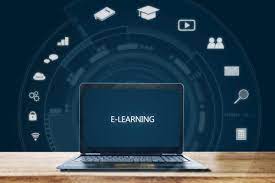Transforming Education with E-Learning Software: Advantages, Challenges, and Future Trends
In today’s digital age, technology has revolutionized every aspect of our lives, including the way we learn and educate ourselves. E-learning software has emerged as a powerful tool that is reshaping the education landscape. This article delves into the world of e-learning software, exploring its advantages, challenges, and the potential future trends that are set to transform education globally.
Advantages of E-Learning Software
Flexibility and Accessibility:
E-learning software offers unparalleled flexibility, allowing learners to access educational content at their own pace and convenience. This is especially valuable for individuals with busy schedules, providing them the freedom to learn anytime and anywhere. Whether it’s a full-time student or a working professional, e-learning ensures education fits seamlessly into their routines.
Personalized Learning:
One of the most significant advantages of e-learning software is its ability to cater to individual learning styles and needs. Advanced algorithms and AI-driven platforms can analyze learners’ progress, preferences, and performance to deliver customized content. This adaptive approach enhances engagement and comprehension, leading to better learning outcomes.
Cost-Effectiveness:
Traditional education often comes with significant costs, including tuition fees, textbooks, and transportation expenses. E-learning drastically reduces these expenses by eliminating the need for physical resources and infrastructure. Students can access high-quality educational materials at a fraction of the cost, democratizing education and widening its reach.
Global Reach:
E-learning software breaks down geographical barriers, enabling learners to connect with educators and peers from around the world. This global perspective fosters diverse interactions, promotes cultural awareness, and prepares learners for a connected, multicultural world.
Interactive and Engaging:
Modern e-learning software employs multimedia elements, interactive simulations, and gamified experiences to keep learners engaged. This active learning approach not only enhances retention but also makes the learning process enjoyable and immersive.
Challenges of E-Learning Software
Digital Divide:
While e-learning software offers immense potential, it also highlights the digital divide that exists between individuals with access to technology and those without. Limited internet connectivity, lack of devices, and inadequate digital literacy can hinder equal access to education.
Self-Discipline and Motivation:
E-learning requires a high level of self-discipline and motivation. Without the structure of traditional classrooms, some learners might struggle to manage their time effectively, leading to procrastination and incomplete courses.
Lack of Physical Interaction:
Human interaction is a crucial aspect of the learning experience. E-learning, by its very nature, lacks the face-to-face interaction between students and teachers, which can limit opportunities for discussions, debates, and collaborative projects.
Technical Glitches and Reliability:
Technical issues can disrupt the e-learning process, affecting the learning experience and causing frustration among users. Platform downtime, slow internet connections, or software glitches can hinder the smooth flow of education.
Quality Control:
The quality of e-learning content can vary widely, as anyone can create and distribute online courses. Ensuring that the content is accurate, up-to-date, and aligned with educational standards can be a challenge.
Future Trends in E-Learning Software
Artificial Intelligence (AI) Integration:
AI will continue to play a significant role in e-learning, powering adaptive learning algorithms, chatbots for instant support, and personalized content recommendations. AI-driven assessments can provide real-time feedback, helping learners identify areas for improvement.
Virtual and Augmented Reality (VR/AR):
Immersive technologies like VR and AR have the potential to revolutionize e-learning. They can create realistic simulations, virtual field trips, and interactive 3D models, enhancing the understanding of complex concepts.
Microlearning:
Microlearning involves delivering content in small, focused chunks. This trend will likely gain traction, as it aligns with the modern attention span and allows learners to consume information in bite-sized formats, enhancing retention.
Collaborative Learning Spaces:
Future e-learning platforms may incorporate features that facilitate collaborative learning. Virtual study groups, discussion forums, and interactive projects can simulate the group learning experience online.
Blockchain for Credentialing:
Blockchain technology can provide secure, verifiable credentials for e-learning achievements. This can enhance the credibility of online courses and degrees, making them more widely accepted in the job market.
Conclusion
E-learning software has ushered in a new era of education, democratizing access to knowledge and transforming the way we learn. Its flexibility, personalization, and cost-effectiveness are reshaping traditional educational paradigms. However, challenges such as the digital divide and the need for self-discipline highlight the complexities of this transition.
As technology continues to evolve, the future of e-learning holds exciting possibilities. AI, VR/AR, microlearning, and blockchain are poised to enhance the educational experience even further, making learning more engaging, interactive, and accessible than ever before. By addressing challenges and harnessing the potential of emerging technologies, e-learning software has the potential to create a global learning community that transcends geographical boundaries.















